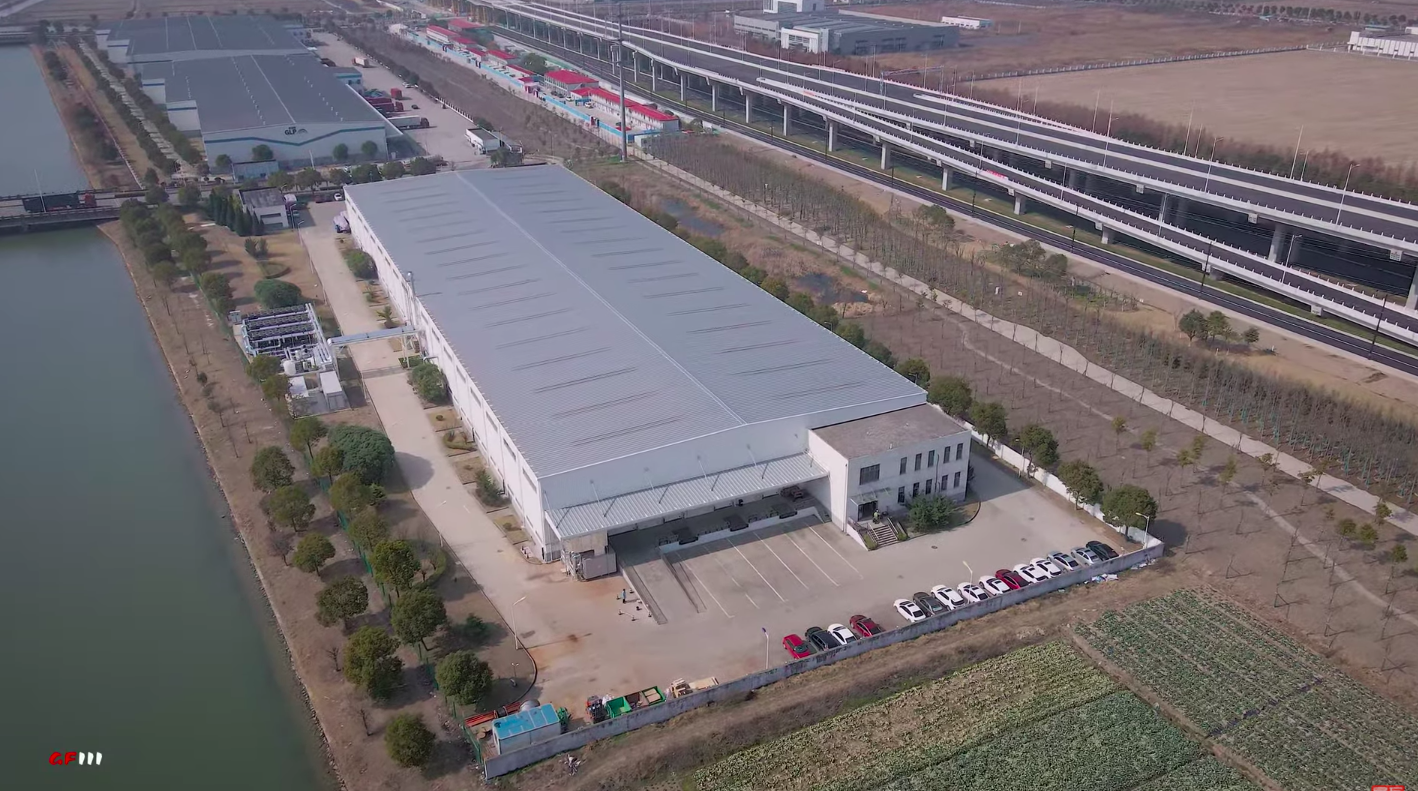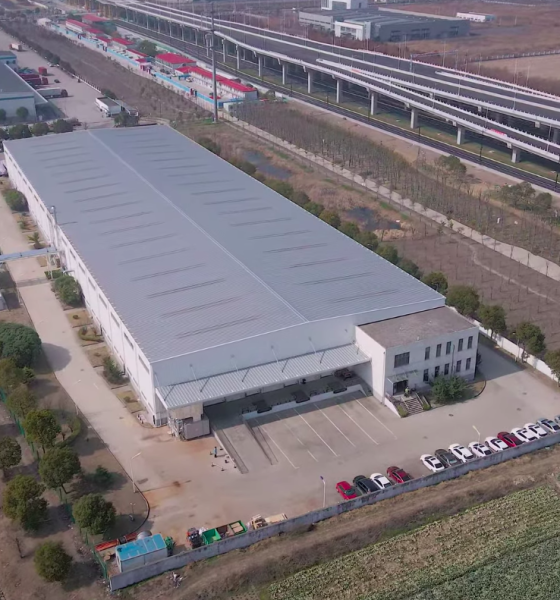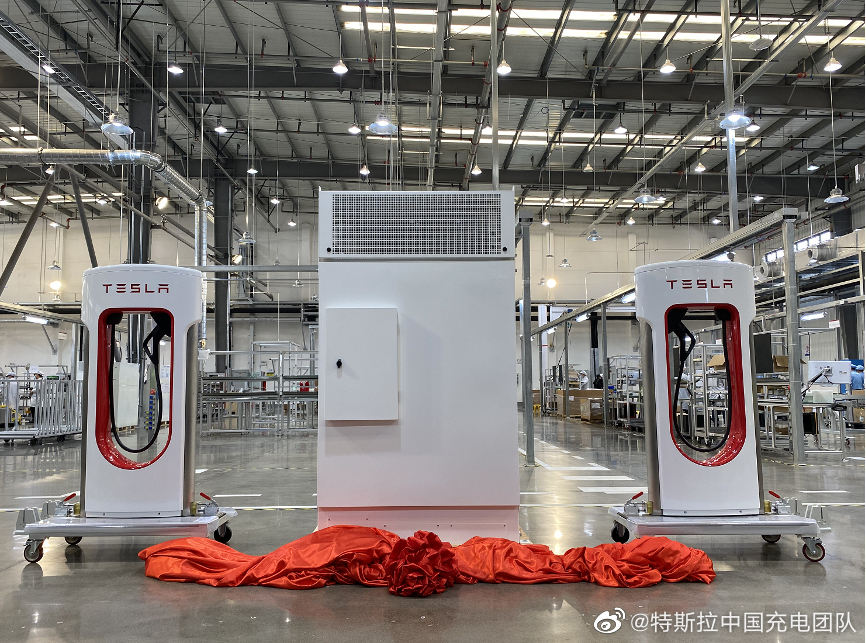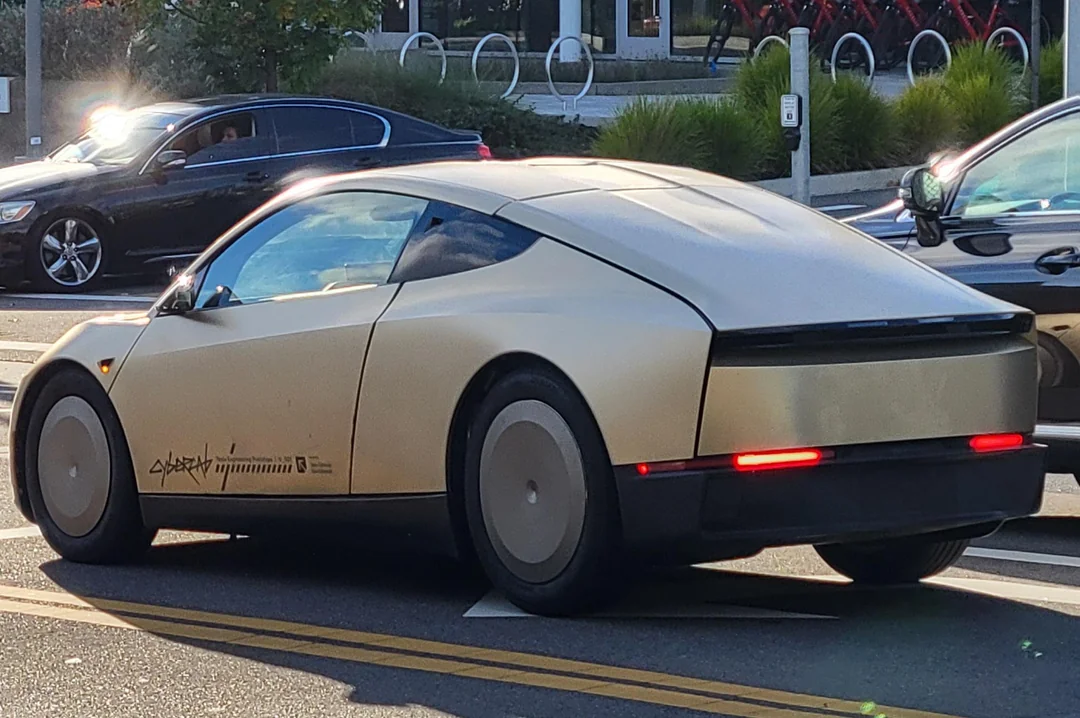

News
A Tesla Supercharger V3 invasion is coming, and it’s starting in a nondescript building in Shanghai
Inside an unmarked, nondescript building less than four miles away from the growing, sprawling Gigafactory Shanghai complex, American electric vehicle maker Tesla is starting what could very well be another disruption in the making. Tesla announced recently that it had started operations in its first dedicated Supercharger V3 plant in Shanghai. The goal of the facility is simple: it would produce 10,000 Superchargers per year.
This goal is quite impressive considering that Tesla, in its official website, notes that it currently operates just over 20,000 Superchargers stalls in more than 2,000 stations across the globe. This means that if the Shanghai Supercharger V3 plant could hit its target production figures, Tesla should be able to double the number of its Superchargers in just a few years. But this is not the most impressive part of this ramp.

Drone operator WU WA, who has been following the progress of Tesla China’s Shanghai projects for over two years now, noted in a recent flyover that Tesla’s Supercharger V3 plant in Shanghai covers just about 5,000 sqm (about 54,000 square feet). That’s not a small area by any means, but it is very compact considering that the Roadrunner line, which hosts the company’s pilot 4680 battery production line in Fremont, covers over 180,000 square feet. It should also be noted that Tesla’s Roadrunner site is already one of the EV maker’s more conservatively-sized facilities.
The fact that Tesla could essentially produce 10,000 Supercharger V3 stations from a 54,000-sq ft facility every year bodes very well for the electric car maker’s efforts to thrive in the mainstream market. With a growing fleet of vehicles, after all, Tesla needs to expand its Supercharger Network to a significant degree. Adding 10,000 chargers to the network annually from one dedicated facility is a great way to support the company’s aggressive vehicle production ramp.
What is quite impressive is that Tesla was able to establish its Supercharger V3 plant in China in just a few months. Granted, this pace may be quite challenging to replicate in other locations like Giga Berlin considering China’s trademark quick construction, but even a Supercharger plant that takes twice as long to build would already increase expand the rapid-charging network to a significant degree. The fact that a 10,000-per-year Supercharger factory could take up only 54,000 square feet also means that Tesla may very well be able to add such a facility in projects like Giga Berlin and Texas.
As noted in a report from the Harvard Business Review, Tesla’s Supercharger Network is arguably one of the electric car maker’s trump cards in the EV race. Established at a time when the company was only building the Model S sedan, the Supercharger Network has become a tried and tested way for electric car owners to undertake long trips without range anxiety. Considering that Tesla is now attempting to break into new markets like the pickup and Class 8 segments, a robust charging network would likely become more important than ever. Fortunately, if Shanghai’s launch of its Supercharger V3 plant is any indication, it appears that Tesla has figured out a formula of sorts to expand its Superchargers worldwide.
Watch a flyover of Tesla’s Supercharger V3 facility in Shanghai in the video below.
Don’t hesitate to contact us for news tips. Just send a message to tips@teslarati.com to give us a heads up.

News
Tesla Model 3 named New Zealand’s best passenger car of 2025
Tesla flipped the switch on Full Self-Driving (Supervised) in September, turning every Model 3 and Model Y into New Zealand’s most advanced production car overnight.

The refreshed Tesla Model 3 has won the DRIVEN Car Guide AA Insurance NZ Car of the Year 2025 award in the Passenger Car category, beating all traditional and electric rivals.
Judges praised the all-electric sedan’s driving dynamics, value-packed EV tech, and the game-changing addition of Full Self-Driving (Supervised) that went live in New Zealand this September.
Why the Model 3 clinched the crown
DRIVEN admitted they were late to the “Highland” party because the updated sedan arrived in New Zealand as a 2024 model, just before the new Model Y stole the headlines. Yet two things forced a re-evaluation this year.
First, experiencing the new Model Y reminded testers how many big upgrades originated in the Model 3, such as the smoother ride, quieter cabin, ventilated seats, rear touchscreen, and stalk-less minimalist interior. Second, and far more importantly, Tesla flipped the switch on Full Self-Driving (Supervised) in September, turning every Model 3 and Model Y into New Zealand’s most advanced production car overnight.
FSD changes everything for Kiwi buyers
The publication called the entry-level rear-wheel-drive version “good to drive and represents a lot of EV technology for the money,” but highlighted that FSD elevates it into another league. “Make no mistake, despite the ‘Supervised’ bit in the name that requires you to remain ready to take control, it’s autonomous and very capable in some surprisingly tricky scenarios,” the review stated.
At NZ$11,400, FSD is far from cheap, but Tesla also offers FSD (Supervised) on a $159 monthly subscription, making the tech accessible without the full upfront investment. That’s a game-changer, as it allows users to access the company’s most advanced system without forking over a huge amount of money.
News
Tesla starts rolling out FSD V14.2.1 to AI4 vehicles including Cybertruck
FSD V14.2.1 was released just about a week after the initial FSD V14.2 update was rolled out.

It appears that the Tesla AI team burned the midnight oil, allowing them to release FSD V14.2.1 on Thanksgiving. The update has been reported by Tesla owners with AI4 vehicles, as well as Cybertruck owners.
For the Tesla AI team, at least, it appears that work really does not stop.
FSD V14.2.1
Initial posts about FSD V14.2.1 were shared by Tesla owners on social media platform X. As per the Tesla owners, V14.2.1 appears to be a point update that’s designed to polish the features and capacities that have been available in FSD V14. A look at the release notes for FSD V14.2.1, however, shows that an extra line has been added.
“Camera visibility can lead to increased attention monitoring sensitivity.”
Whether this could lead to more drivers being alerted to pay attention to the roads more remains to be seen. This would likely become evident as soon as the first batch of videos from Tesla owners who received V14.21 start sharing their first drive impressions of the update. Despite the update being released on Thanksgiving, it would not be surprising if first impressions videos of FSD V14.2.1 are shared today, just the same.
Rapid FSD releases
What is rather interesting and impressive is the fact that FSD V14.2.1 was released just about a week after the initial FSD V14.2 update was rolled out. This bodes well for Tesla’s FSD users, especially since CEO Elon Musk has stated in the past that the V14.2 series will be for “widespread use.”
FSD V14 has so far received numerous positive reviews from Tesla owners, with numerous drivers noting that the system now drives better than most human drivers because it is cautious, confident, and considerate at the same time. The only question now, really, is if the V14.2 series does make it to the company’s wide FSD fleet, which is still populated by numerous HW3 vehicles.
News
Waymo rider data hints that Tesla’s Cybercab strategy might be the smartest, after all
These observations all but validate Tesla’s controversial two-seat Cybercab strategy, which has caught a lot of criticism since it was unveiled last year.

Toyota Connected Europe designer Karim Dia Toubajie has highlighted a particular trend that became evident in Waymo’s Q3 2025 occupancy stats. As it turned out, 90% of the trips taken by the driverless taxis carried two or fewer passengers.
These observations all but validate Tesla’s controversial two-seat Cybercab strategy, which has caught a lot of criticism since it was unveiled last year.
Toyota designer observes a trend
Karim Dia Toubajie, Lead Product Designer (Sustainable Mobility) at Toyota Connected Europe, analyzed Waymo’s latest California Public Utilities Commission filings and posted the results on LinkedIn this week.
“90% of robotaxi trips have 2 or less passengers, so why are we using 5-seater vehicles?” Toubajie asked. He continued: “90% of trips have 2 or less people, 75% of trips have 1 or less people.” He accompanied his comments with a graphic showing Waymo’s occupancy rates, which showed 71% of trips having one passenger, 15% of trips having two passengers, 6% of trips having three passengers, 5% of trips having zero passengers, and only 3% of trips having four passengers.
The data excludes operational trips like depot runs or charging, though Toubajie pointed out that most of the time, Waymo’s massive self-driving taxis are really just transporting 1 or 2 people, at times even no passengers at all. “This means that most of the time, the vehicle being used significantly outweighs the needs of the trip,” the Toyota designer wrote in his post.
Cybercab suddenly looks perfectly sized
Toubajie gave a nod to Tesla’s approach. “The Tesla Cybercab announced in 2024, is a 2-seater robotaxi with a 50kWh battery but I still believe this is on the larger side of what’s required for most trips,” he wrote.
With Waymo’s own numbers now proving 90% of demand fits two seats or fewer, the wheel-less, lidar-free Cybercab now looks like the smartest play in the room. The Cybercab is designed to be easy to produce, with CEO Elon Musk commenting that its product line would resemble a consumer electronics factory more than an automotive plant. This means that the Cybercab could saturate the roads quickly once it is deployed.
While the Cybercab will likely take the lion’s share of Tesla’s ride-hailing passengers, the Model 3 sedan and Model Y crossover would be perfect for the remaining 9% of riders who require larger vehicles. This should be easy to implement for Tesla, as the Model Y and Model 3 are both mass-market vehicles.









